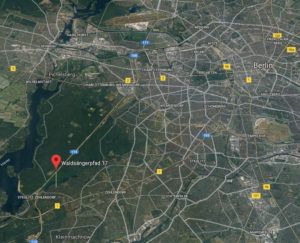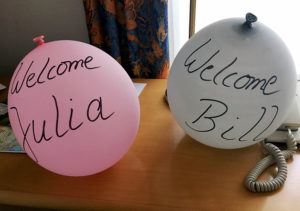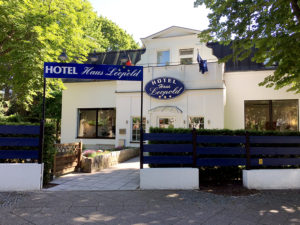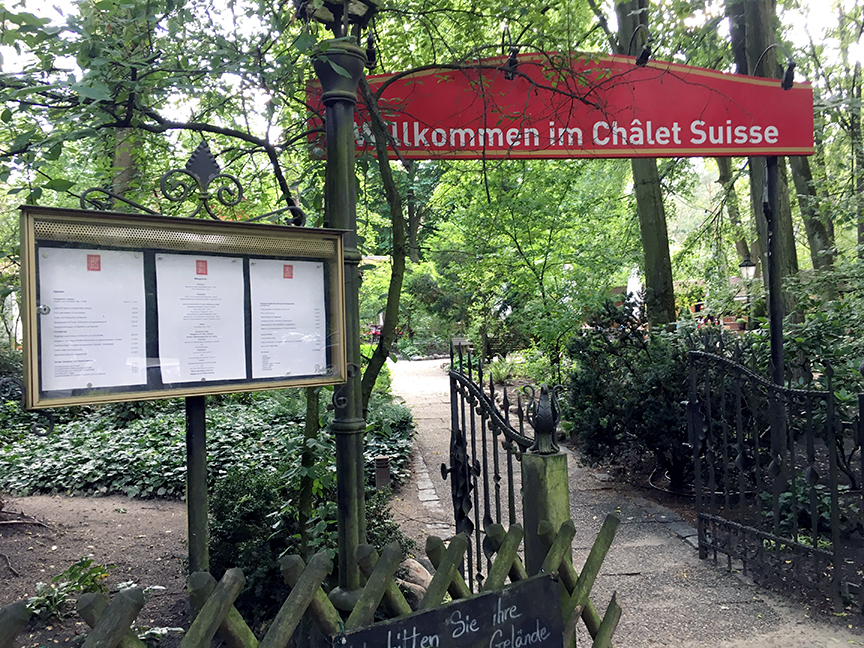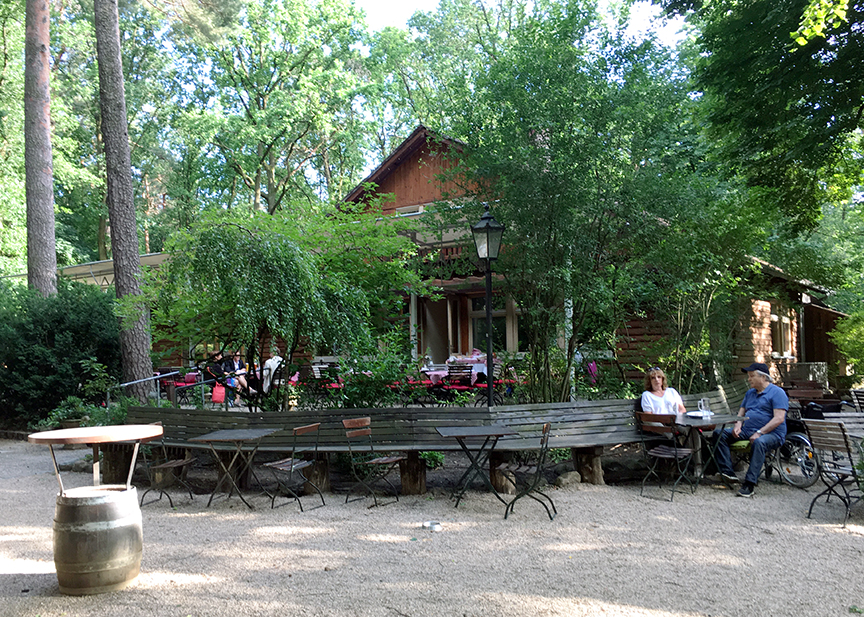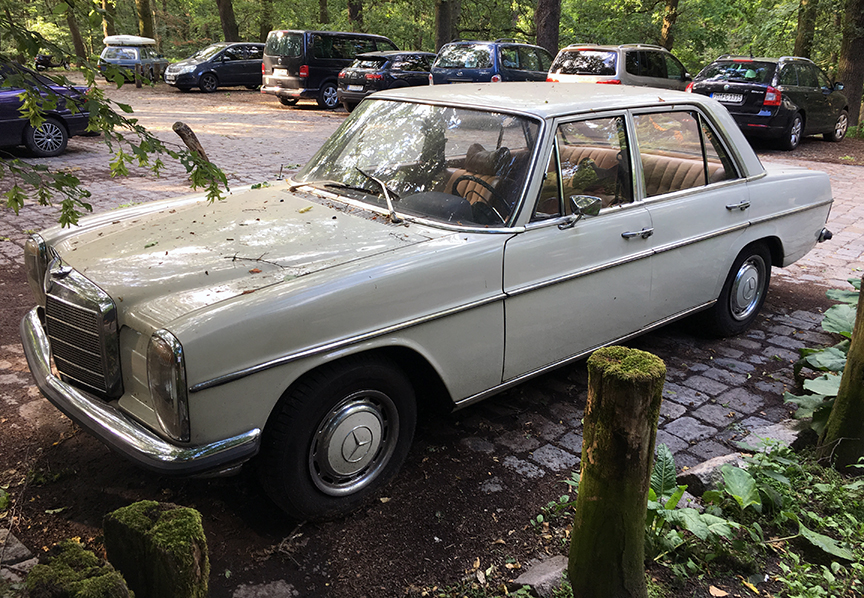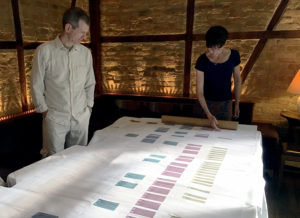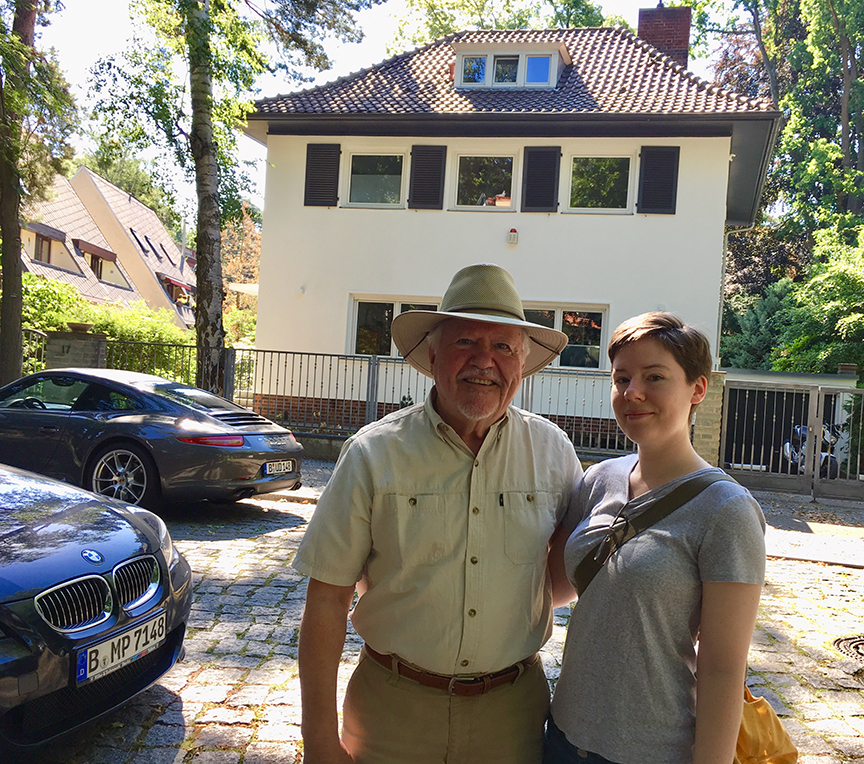
Admiral Canaris, his wife, and two daughters had lived at Waldsangerpfad 17, also in Zehlendorf and southwest of the center of Berlin. (UPDATE: A little more research reveals that the address of the house when the Canarises lived there was Betazeile 17.)
By the time my parents lived in the house — beginning November 1945, six months after the end of the war — no one from the Canaris family lived there. Based on mounting evidence that he had been working against Hitler, Wilhelm Canaris had been dismissed and the Abwehr disestablished in early 1944. After Canaris’s personal diary, containing additional evidence of his opposition, was presented to Hitler, Canaris was arrested, convicted by an SS summary court, and sentenced to death. He was executed on 9 April 1945.
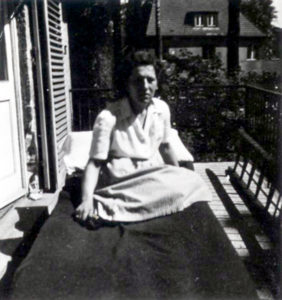 While my parents lived in the house, my mother became pregnant with me. This is a picture of my mother, in spring 1946, sitting on a cot out on the second-floor rear deck of the house. She told me later that she was suffering from morning sickness at the time. Sure looks it.
While my parents lived in the house, my mother became pregnant with me. This is a picture of my mother, in spring 1946, sitting on a cot out on the second-floor rear deck of the house. She told me later that she was suffering from morning sickness at the time. Sure looks it.
On 14 June 2019, Julia and I joined members of the extended Canaris family on a visit to the Canaris home. The neighborhood is quite nice, featuring generally large homes, expansive yards, and cobbled roads. (I’m not sure I’d enjoy driving on the cobbled surfaces, but they lend a certain style and do tend to slow drivers down.)
(Julia and Sam had previously visited the house in December 2017, when they went to Paris and Berlin for their honeymoon. She had tracked it down using WWII-era photos as reference.)
Isabel had made arrangements beforehand, of course, with the current occupants of the house, who were very gracious in inviting us onto the grounds. We spent 15-20 minutes in the back yard, which contained wonderful plants and landscaping. I believe the current owners learned about the home’s history only a short time before the visit (it was 72+ years ago) and of its importance to me personally only during our visit.
Here’s a brief (1:16) video from the visit.

